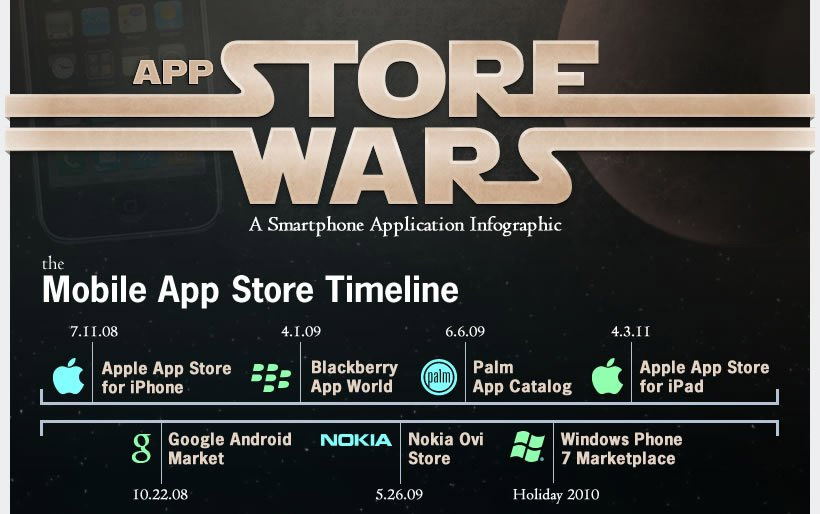1stwebdesigner |
| Your Mobile Apps Look Bad and You Should Feel Bad Posted: 25 Jul 2014 06:00 AM PDT Mobile application design and development has been 'the thing' as of late. With the growing prominence of smartphones, more and more applications are developed. It's like, we have an app for everything, right? What makes it even more amazing is that this year, the projected number of smartphone users will be 1.75 billion. This staggering number resulted into 2.6 million apps in app-stores (iOS, Android, Blackberry and Windows phones combined). If there is one thing certain about these huge statistics, it would be that mobile application development and design is a big and newly-discovered gold mine to plow. There are a lot of opportunities waiting for developers as mobile apps continue on growing as the age of smartphones conquer the market.
|
| Brain Drain, Anyone? Flush It Out Posted: 25 Jul 2014 03:00 AM PDT Is there such an idea called BRAIN DRAIN?
Generally, Investopedia defines it as “a slang term for a significant emigration of educated or talented individuals”. But what is its literal meaning? The exhaustion of the brain because of too much thinking, how people get it and how to defend yourself from having it. Too much thinking about something is the least feeling you can have when you create, develop or write something. I can compare this with a glass of water spilling, having no space anymore to occupy. The glass is the brain and the water is the information injected into the brain.
More and more people are now suffering from too much exhaustion of the mind. Creating, formulating and developing something from nothing needs a lot of mental ability. This could wear out your brain cells. It is extremely hard and difficult to cope with this kind of situation and, knowingly, we would feel uneasy. This is commonly experienced by bloggers, web developers and designers. How do we get it?
Web developers and designers usually push themselves too hard to squeeze the best juices of their creativity ever! You might wonder why computer enthusiasts sit all day long in front of their computers just to grab awesome ideas. This drains their energy and mental capacity. It’s like kryptonite trying to absorb all the energy of Superman. Spending longer periods of time on certain projects or tasks can lead to mental fatigue. Mental fatigue impairs physical performance in humans, according to the American Physiological Society study. You might think that to be more productive is to spend more quality time on something so the more you'll get things done, right? I don't think so. The human body needs to take regular breaks from mental tasks to improve productivity and creativity. Without it, everything will simply make you stressful and bored. Like machines, without a short break results to overheating, malfunction and inefficiency. Breaks are great. People need to separate themselves from what they are doing even for just a short period of time. This gives the brain a little gift of recharging. Some factors that cause exhaustion
Exhaustion Consequences
Here’s what will happen if you don’t take care of your fatigue
How to Combat?
It is never too late to take some necessary precautions towards this problem. Try some of these. 1. Rehydrate yourself
Most people don't have time to get a glass of water, which makes them dehydrated. Dehydration is considered to be one of the symptoms of tiredness. In a David Benton article, it stated that the dehydration influences mood and cognition. So plunge in! 2. Go green and leafy
Green and leafy vegetables can affect brain stimulation. It says that the average American eats only 57 percent of the recommended amount. However,eating plenty of vegetables can help regenerate your brain’s condition. 3. Read quotes
Spend some time reading inspirational quotes. It may sound elementary but it can boost your emotions to be inspired again to what you are doing. Read and live. 4. Unfriend the social media sometimes
Everything that is happening around us are generated by computer. Social media and news is considerably exhausting for our brains. Processing them all in a short span is incredibly impossible. Try to filter by deleting some unnecessary items. By doing this so, it can trim down your stress and give you some relief. 5. Have a good sleep
Lack of sleep can trigger your mind's capacity to think. Not giving your tiny brain cells a power nap booster could slowly kill them. When you are too tired, this result to sleeping problems. Your body clock starts to disorganize. If you can’t sleep right away, try to take a cold shower before going to sleep. 6. Delegate your task
You are not Superman. You can't possibly do all things in one snap of your fingers! Let someone do the things also. It might come handy. Dividing tasks can save time and energy. This is highly recommended for web designers and developers. 7. Switch to a new environment
Working on a project in the same area or location can be too boring and unproductive. Looking at the same furniture and wall decals can be so sad for the eyes. Being in a new working environment can stimulate your senses and for a great new perspective which helps you create and generate new ideas. 8. Say "NO" sometimes
Actually, there is no problem with the idea of saying "no" to someone else asking for your favor. Don't think that it would lessen their respect towards you. No. that doesn't to be the real score always. Rejecting sometimes can give your inner souls a sense of a freedom from having pressure. 9. Listen to yourself
Rest when you feel tired. It is the only stimulant that the body could have. Your body will tell you so. Different bodily discomfort would tell you if your body is too tired to move on. You might sometimes your conscience telling you what to do. 10. Don't compare yourself to others
Sometimes getting ahead from others is what we usually think. Being top among the rest is the goal that we often think. These are just the reasons that give us the painstaking pressure! It can lead us to draining yourself and gives you the feeling of unworthiness. Just always remember that you are greater than enough! To ConcludeYour brain capacity to store information is incredible but using it, is incomprehensible. Giving yourself a break is a sugary treat to your tired mind. Fatigue is an energy killer. Flush them before it's too late. What's your exhaustion charger? |
| You are subscribed to email updates from 1stwebdesigner To stop receiving these emails, you may unsubscribe now. | Email delivery powered by Google |
| Google Inc., 20 West Kinzie, Chicago IL USA 60610 | |




















No comments:
Post a Comment